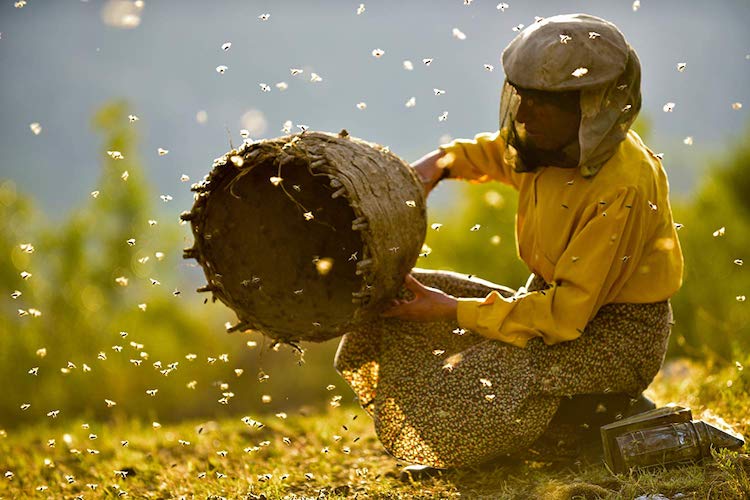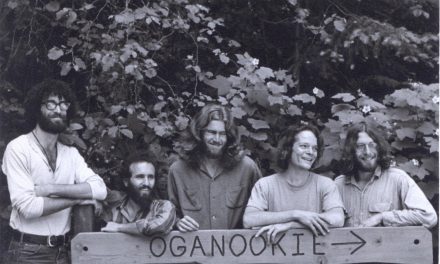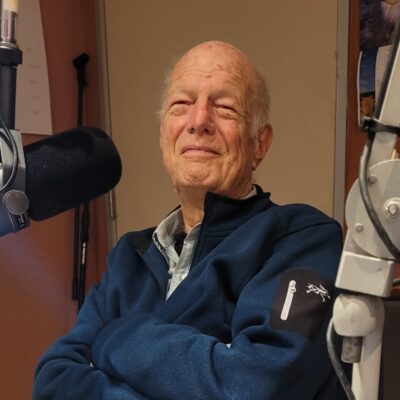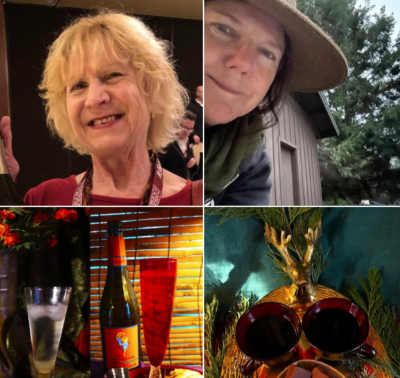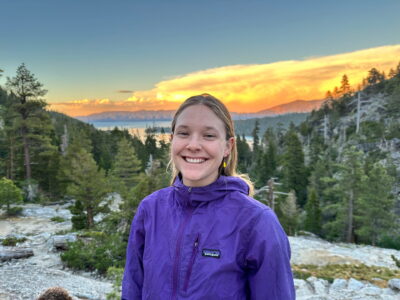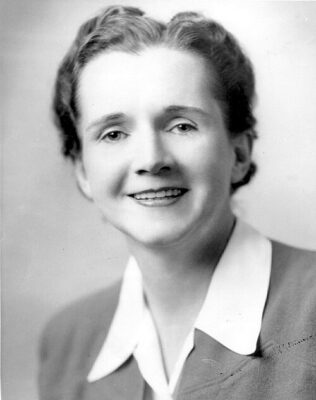
At this year’s Sundance Film Festival, it was Honeyland, a documentary about a beekeeper, which generated the most buzz. It took home three awards, more than any other film in competition, and it’s North Macedonia’s official submission in this year’s Oscar race for Best Documentary Feature.
Honeyland is an intimate window into the life of Hatidze, a middle-aged woman who ekes out a meager existence within a remote region of Macedonia by raising bees and selling honey. As per tradition, when her migratory tribe moved on, Hatidze stayed behind to care for her non-ambulatory 85-year old mother. Other than a dog and a few cats, they live in complete solitude within a small adobe home far removed from civilization. A utilitarian white plastic bucket stands out as one of their few possessions.
The first of many stunning images is of Hatidze visiting a beehive precariously located on the edge of a precipice – the perfect metaphor for her life. As she pries rocks apart to gain access, bare handed and without a mask, it becomes apparent that she and the bees have come to an understanding. “Half for you, half for me,” she tells them as she places honeycomb into her bucket. That simple 50-50 philosophy, which is rephrased throughout the film, becomes a mantra for sustainability and balance, both ecological and economic. Because if more than half of the honey is taken away, Hatidze’s source of income will perish along with the bees.
Shortly afterwards, with her trusty bucket packed full of jars of fresh honey, Hatidze makes a brief foray by train to a distant marketplace. Upon her return, the serenity of her homestead is shattered by the squeaks and groans of a truck straining to pull a caravan over the rocky terrain. It’s a nomadic family encroaching on her fallow land. Engine sounds dissolve into yelling parents and screaming kids as they settle nearby. Hatidze observes the intrusion from a short distance away. Her stoicism can’t completely hide her apprehension. How will her uninvited neighbors affect her life? Her bees? Now begins the actual story; it’s about the problems facing our world in microcosm.
Honeyland plays like a low-budget indie movie written for, and starring, non-actors, not unlike last year’s excellent Oscar contender for Best Foreign Language Film, Capernaum. That’s because the two directors, Tamara Kotevska and Ljubomir Stefanov, took an entire year to sculpt four hundred hours of footage, shot over the course of three years, into a one and a half hour story with a standard three-act structure. If you didn’t know you were watching a documentary, you could easily mistake Honeyland as a work of fiction.
Much of the film could function just fine without its subtitles, a testimony to the strength of its purposeful editing and beautiful cinematography. Of particular note is the way Hatidze is photographed. Irvin Kershner once said, “There’s nothing more interesting than the landscape of the human face.” Hatidze’s could be Exhibit A. There’s a poignant beauty in the way every weathered line and crooked tooth gives testimony to the hardships of her life. It’s a face that’s a story unto itself.
Honeyland is an essential viewing experience; it gives us a privileged look into the life of someone we will never meet, it transports us to a place we will never visit, and it’s the distillation of the environmental and social problems that we must somehow solve if humanity is to survive.
For KSQD’s Film Gang, this is Paul Kanieski.

